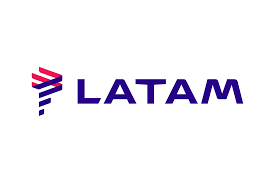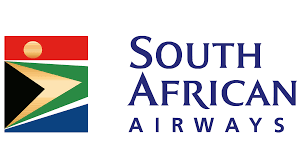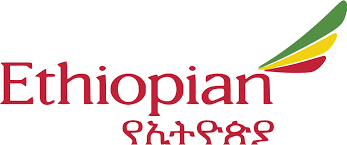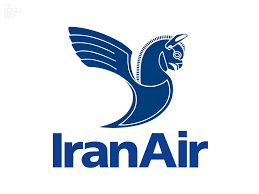Several Western airlines are pulling out of routes servicing China as sanctions have forced Western carriers to incur greater operational costs by avoiding Russian airspace. British Airways, Virgin Atlantic and Quantas are just three who are giving up what were lucrative direct flights to Beijing and Shanghai. Other, BRICS and BRICS related airlines are now filling the gaps – and at very reasonable prices.
British Airways has become the latest European airline to scale back flights to China as demand weakens and the cost of avoiding Russian airspace reduces the appeal of the route for carriers. BA on Thursday (August 8) said it would suspend its route between London’s Heathrow and Beijing from October 26 for at least a year. Rival Virgin Atlantic said it would also close its route between London and Shanghai from October 25. Quantas have also ceased flying direct routes to China. Several other European airlines are understood to be poised to follow suit.
The moves have come after the West imposed sanctions on Russian airlines entering their airspace and banned Aeroflot, its subsidiaries, and other Russian airlines from using their facilities. Russia responded by banning Western airlines, including from the EU and United States, from Russian airspace. This has meant that flights between Europe and Asia especially, are now hours longer than before and with significantly increased ticket costs. The price of aviation fuel in the West has also increased as the West refrained from purchasing cheaper Russian supplies.
The cheapest, one-way direct flight between London and Beijing on BA was recently priced at over US$1,600. By comparison, direct, round-trip flights between Moscow and Beijing on China Southern airlines can be obtained for under US$400. Chinese aircraft are not barred from Russian airspace.

In terms of the BRICS, the retrenchment of especially European airlines from Eurasia has created opportunities, with a surprising amount of intra-BRICs air connectivity having been developed. This means opportunities for airlines from the BRICS and BRICS Plus countries to move into the Eurasian market. We identify the main players as follows:
Brazil

LATAM Brasil is the largest regional airline in South America with extensive connections throughout the region. It also connects with fellow BRICS member South Africa with direct flights to Johannesburg. While LATAM doesn’t yet operate direct flights itself to other BRICS countries, it does code share with other BRICS airlines as regards direct connectivity to Rio de Janeiro and Sao Paulo. We identify these services below.
Russia

While the Russia sanctions are negative for the overall connectivity performance of European airlines to Asia, access from Russia to Asia and vice versa has been expanding, with new opportunities for other airlines too. Russian airlines are expanding routes across Asia, Africa and the Middle East with Aeroflot also now flying long haul direct to destinations such as Bali and Cuba. This trend is continuing, and especially as concerns the Russian outbound tourism sector.
Aeroflot meanwhile flies direct to India (Delhi, Goa, Kolkota, Mumbai), China (Beijing, Guangzhou, Harbin, Hong Kong, Sanya, and Shanghai), South Africa (Johannesburg), Egypt (Cairo, Hurghada, Sharm-el-Sheikh), Ethiopia (Addis Ababa), Iran (Tehran), and the UAE (Dubai). Aeroflot is also extensively connected throughout Russia, as well as the Caucasus, and Central Asia.
India

Air India has direct flights with fellow BRICS members Russia (Moscow), China (Hong Kong), South Africa (Durban, Johannesburg), Egypt (Cairo), Ethiopia (Addis Ababa), Iran (Tehran) the UAE (Abu Dhabi, Dubai). It is also well connected throughout India as well as to other southeast Asian destinations.
China

China has an extensive international network, and multiple airlines servicing these. Of these airlines, two main ones stand out in international travel: Air China and China Southern, although there are others. Air China services BRICS members Brazil (Sao Paulo), Russia (Chita, Irkutsk, Moscow, Omsk, St.Petersburg and Yekaterinburg) South Africa (Johannesburg), as well as Egypt (Cairo), Ethiopia (Addis Ababa), Iran (Tehran), and the UAE (Dubai).
Based from Guangzhou, China Eastern also flies direct to BRICS members Russia (Irkutsk, Khabarovsk, Moscow, Novosibirsk, St.Petersburg and Vladivostok), Ethiopia (Addis Ababa) and the UAE (Dubai). Both these, as well as smaller regional airlines, including Hong Kong based Cathay Dragon, also have extensive connectivity throughout Central Asia, the Middle East and Southeast Asia.
South Africa

South African Airways is significantly outnumbered in fleet size by Ethiopia Airlines (see below), partially because the country is deep in the Southern Hemisphere and further away from many destinations. Yet it has direct flights to Brazil (Rio de Janeiro, Sao Paulo), China (Beijing, Hong Kong), India (Mumbai), and the UAE (Abu Dhabi).
Africa

Ethiopia, a member of BRICS from January, has Africa’s most popular airline, and has taken on new direct routes, including from South Africa to Russia (Moscow), as well as to other BRICS countries such as Brazil (Sao Paulo), India (Ahmedabad, Bangalore, Chennai, Delhi, Hyderabad and Mumbai) China (Beijing, Chengdu, Chongqing, Guangzhou, Hangzhou, Hong Kong, Nanjing, Shanghai, Shenzhen, Xiamen and Urumqi) and of course multiple destinations across Africa. Ethiopian Airlines also flies to fellow BRICS members Egypt, Saudi Arabia and the UAE.
Egypt

Egypt joined BRICS in January, and has direct flights to other BRICS members including Brazil (Sao Paulo), Russia (Moscow), India (Delhi, Mumbai), China (Beijing, Guangzhou, Hangzhou, Hong Kong, and Shanghai) South Africa (Cape town, Durban, and Johannesburg) as well as to Ethiopia (Addis Ababa), and the UAE (Abu Dhabi, Dubai, Fujairah and Sharjah). It also has extensive connections throughout the MENA region and elsewhere into Africa.
The UAE and Middle East

The United Arab Emirates also joined BRICS in January, where from the Near East, Emirates, Qatar and Fly Dubai now frequently services the Eurasian region, as does Turkish airlines.
Emirates airlines has direct flights to Brazil (Rio de Janeiro, Sao Paulo), Russia (Moscow, St. Petersburg), India (Ahmedabad, Bangalore, Chennai, Delhi, Hyderabad, Kochi, Kolkota, Mumbai and Thiruvananthapuram), as well as to China (Beijing, Guangzhou, Hong Kong, Shanghai, Yinchuan and Zhengzhou) and South Africa (Capetown, Durban, and Johannesburg). Other BRICS members Emirates service include Egypt (Alexandria, Cairo), Ethiopia (Addis Ababa), and Iran (Tehran). Naturally, Emirates also has extensive connections throughout the Middle East and North African destinations.
Iran

Iran has been heavily sanctioned by the West, and this has curtailed its international flight schedules. Nonetheless it maintains very important regional connectivity including important connections through to Azerbaijan (Baku), Turkiye (Istanbul), and Uzbekistan (Tashkent). In terms of its connections with fellow BRICS members, it operates direct flights to Russia (Moscow), India (Mumbai), China (Beijing), and the UAE (Dubai).
Summary
As can be seen, the intra-BRICS air connectivity is extensive, and still growing. This will become even more apparent when other expected members join. These include numerous other African nations, including the North African Mediterranean states, the Indian Ocean facing, east African states as well as multiple countries throughout Southeast Asia and several in Latin America. This expansion and improved connectivity is happening partially as many of these countries either possess their own fuel resources, or can buy them relatively cheaply from Russia. These friendly countries also have access to Russian airspace. Both of these factors help keep down the cost of flight tickets and provide a reasonably cost-effective method of travelling.
This is happening at the same time that Western airlines are facing increased costs due to their largely self-imposed desire not to purchase less expensive Russian oil, coupled with their longer routes – especially to the East – also adding to their operational costs when having to bypass Russian airspace.
The conclusion therefore is that a deterioration of Western air services is occurring – and the BRICS countries and their airlines are now picking up on these new opportunities. This will have extensive filter-down impacts as well – BRICS demand for upgraded airport and new airport capacities, demand for new aircraft, the development of new warehousing and supply chains, including the building of airport connecting road and rail facilities, employment, and the creation of new consumer wealth. Imposing sanctions motivates growth and development elsewhere – with this example being very much to the advantage of the BRICS.
Further Reading

For updated news about the BRICS please view our BRICS archives here.






